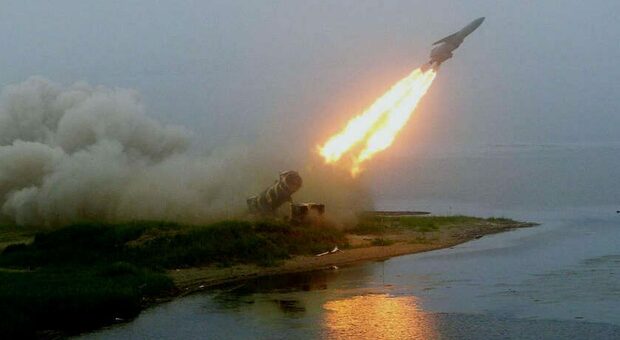Russia, the largest country in the world, has a GDP lower than Italy’s. Most of its population suffers from economic restrictions in a degree that is not understandable for a modern state. This is due to the depredations in favor of its oligarchs and, above all, to the military high expenses (maintenance of a and nuclear arsenal) that is what helped create the sindrome russa (Russian syndrome).
No threats from NATO and the USA
Russia feels constantly threatened. But no US nor NATO have ever tried to violate Russian territories. Instead, Russia feels itself under a possible attack on its sovereignty. In short, it is like the reaction of the snarling hatch when a person, even a child, is approaching.
The Khaliningrad missiles
Moreover, in 2016, Russia deployed Iskander missiles in Khaliningrad (a Russian enclave among the Baltic countries). They are vectors that can be launched from mobile platforms with a mach 6.2 hypersonic speed, equipped with a 50 kTon thermonuclear warhead. They would arrive in Berlin in three to four minutes. Yet NATO didn’t raise no alarms at the time or after.
Trump and Biden
The sindrome russa (Russian syndrome) is absurd, especially if you consider the intercontinental missiles Putin’s country owns which are capable of flying 12,000 km and hitting the US itself. In addition we must say that Donald Trump contributed to this sindrome russa (Russian syndrome) with his wrong behaviors. This situation made the United States dangerously withdraw, in August 2019, from the Intermediate-Range Nuclear Forces (INF) treaty. It was Regan and Gorbachev who signed that treaty in 1987in order to ban the intermediate-range missiles.
In November Mr. Trump 2020 decided the withdrawal of the Usa from the Open Skies treaty, an agreement for the overflight on reciprocal territories that Eisenhower had promoted in 1955 (it was renewed in Helsinki in 1992). Finally, Trump had also blocked the fundamental and multi-year NEW START (New Strategic Arms Reduction Treaty) for the limitation of nuclear warheads and strategic carriers. The withdrawal from the aforementioned treaties objectively meant the race to rearm. Fortunately Biden and Putin then signed the NEW START on 5/2/2021
Economic expansion
However, the war against Ukraine does not even seem to be based on the sindrome russa (Russian syndrome) tied to the encirclement. Rather, it appears to be based on Putin’s will to increase Russia’s economic power through the annexation of all or part of Ukraine. All this, as he himself has said, in the perspective of a new tsarist empire. By doing this he believes to remedy the error of Lenin who in 1922 declared the independence of that and other neighboring countries by creating the USSR (Union of Soviet Socialist Republics).
La sindrome russa
Tutti sanno che la Russia, il più grande paese al mondo, ha un PIL inferiore a quello dell’Italia. La maggior parte della sua popolazione soffre di restrizioni economiche inconcepibili per un stato moderno. Ciò sia a causa delle depredazioni avvenute per mano dei suoi oligarchi, ma, soprattutto, per via della destinazione data alle risorse economiche verso il mantenimento di un arsenale militare e nucleare da ex grande potenza. Cosa che ha contribuito a creare la sindrome russa.
Nessuna minaccia da Nato e USA
La Russia si sente continuamente minacciata. Ma nessuno, né Usa né NATO hanno mai avuto in mente di violare il territorio russo, né mai concretamente operato in tale senso. Invero la Russia percepisce ogni azione difensiva di NATO e Usa come un possibile attacco alla propria sovranità. Insomma, è come la reazione del botolo ringhioso all’avvicinarsi di qualsiasi persona, fosse anche un bambino.
I missili di Khaliningrad
Peraltro, sul piano militare nel 2016 la Russia ha schierato a Khaliningrad (enclave russa tra i paesi baltici) i missili Iskander. Si tratta di vettori che possono essere lanciati da piattaforme mobili con una velocità ipersonica mach 6.2, provvisti di testata termonucleare da 50 kTon. Arriverebbero a Berlino in tre o quattro minuti. Eppure, nessun allarme era stato lanciato dalla NATO all’epoca o successivamente.
Trump e Biden
La sindrome russa appare incomprensibile anche tenendo conto dei missili intercontinentali, che il Paese di Putin possiede, capaci di volare per 12.000 km e colpire gli stessi Usa. Ma lo sviluppo della sindrome è stato purtroppo favorito anche da comportamenti sbagliati di Donald Trump. Quest’ultimo ha fatto pericolosamente recedere gli Stati Uniti, nell’agosto 2019, dal trattato Intermediate-Range Nuclear Forces (INF), siglato nel 1987 da Regan e Gorbaciov per la messa al bando dei missili a raggio intermedio.
E nel novembre 2020 ha deciso il recesso degli Usa dal trattato Open Skies, accordo per il sorvolo sui reciproci territori promosso da Eisenhower nel 1955, rinnovato a Helsinki nel 1992. Infine, Trump aveva anche bloccato il fondamentale e pluriennale trattato NEW START (New Strategic Arms Reduction Treaty) per la limitazione delle testate nucleari e dei vettori strategici. Il recesso dai predetti trattati ha obiettivamente significato la corsa al riarmo. Fortunatamente Biden e Putin hanno poi firmato il NEW START il 5/2/2021
Espansione economica
Tuttavia la guerra contro l’Ucraina non sembra neanche fondata sulla sindrome russa dell’accerchiamento. Appare piuttosto basata sulla volontà di Putin di accrescere la potenza economica della Russia attraverso l’annessione di tutta o parte dell’Ucraina. Il tutto, come detto da lui, in ottica di neo impero zarista, rimediando all’errore di Lenin che nel 1922 dichiarò l’indipendenza di quello e di altri paesi confinanti realizzando l’URSS (Unione delle Repubbliche Socialiste Sovietiche).
Leggi anche: Diseguaglianza e democrazia








